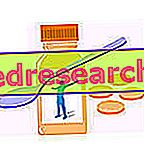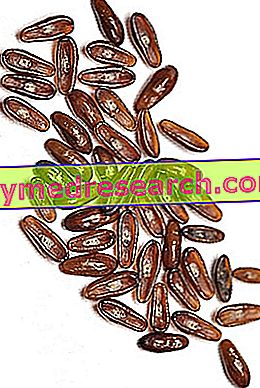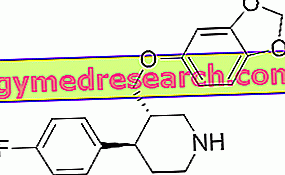In collaboration with Dr. Eleonora Roncarati
Chemical-physical composition
According to the laws, honey is essentially composed of different sugars, especially glucose and fructose, water, as well as organic acids, enzymes, and solid particles from the collection of nectar.
- SUGARS: they represent more than 95% of the dry matter of honey and therefore are the substances that for the most part determine the physical properties such as viscosity, hygroscopicity, physical state (liquid or crystallized).

- WATER: the water content is one of the most important characteristics for honey because it conditions its preservability and consequently its quality. The optimal value can be defined around 17%. Very low values can cause difficulties in working processes, values that are too high easily cause fermentation processes.
- ORGANIC ACIDS: the pH of honey is generally acid, with values between 3.5 and 5.5, due to the presence of organic acids. The most represented acid is gluconic acid, a derivative of glucose due to the action of gluco-oxidase. The acidity of the honey contributes, together with the osmotic pressure due to the very high sugar concentration, to ensure its microbiological stability.
- NITROGEN SUBSTANCES: they are hypo-represented in honey and are made up of free amino acids and proteins derived from nectar or honeydew, or which are partly associated with pollen grains. They are therefore substances that can somehow be associated with the botanical origin of honey.
- MINERAL SUBSTANCES: the concentration of mineral substances in honey can vary from 0.02% to 1% in relation to botanical origin; K constitutes 75% of this fraction, accompanied by S, P, Ca, Ms, Fe, Cu, Mn. In general, lighter colored honeys are poorer in minerals.
- TRACK COMPONENTS: ALDEHYDES, KETONS, ALCOHOLS, ESTERS, PIGMENTS (CAROTENOIDS, FLAVONOIDS, ANTOCIANS, CHLOROFILLE) responsible for the aroma.
Furthermore, the honey must not be added with other ingredients, including additives, and must not contain organic and inorganic substances which are foreign to its composition: it could in fact be contaminated by pesticides used in agriculture, pharmacologically active substances of apicultural interest, chemical elements (lead and cadmium) of environmental derivation.
Honey in the Diet
The composition of honey
Honey is a sugary substance produced by bees by enzymatic transformation, based on the partial conversion of sucrose (of nectar and honeydew) into simple sugars glucose and fructose. Similarly to nectar, it presents a very variable composition depending on the plants from which it comes, on average represented by:
- Sugars 66-83% Glucose, fructose, sucrose oligosaccharides
- Water 13-20%
- Rubbers and dextrins 1-5%
- 1% protein
- Mineral substances 0.05-0.3%
- Enzymes, organic acids, vitamins, traces
While the mineral substances (calcium, iron, aluminum, magnesium, sulphates, various carbonates, phosphoric acid ...) come directly from the nectar, the proteins come from the digestive system of the bee during the transformation of the nectar into honey.
It is advisable to consume them only occasionally when they are present: low values of insulin sensitivity, reduced glucose tolerance, overt diabetes, obesity, dyslipidemia.
Fluidity
As soon as it enters the combs the honey is normally endowed with a good degree of fluidity, variable in relation to the quality of the nectar. Some time after extraction from the combs, it generally solidifies and lightens, while retaining the same shade of color initially present. To take this state the honey takes a variable time, inversely proportional to the sucrose content which, in fact, favors it. At low temperature the honey crystallizes more quickly. The fluidity of honey is to be related also to the thermal treatments to which it can be subjected: the heated sucrose melts and gradually becomes golden; fructose and glucose undergo dehydration, cyclization and polymerization. In the cycling phase, an aldehyde (the hydroxymethylfurfural HMF) appears, which allows the thermal treatment to be signaled. The concentration of this compound is in fact used to catalog the honey, assess the extent of the heating immediately, reveal the fraudulent mixing with table sugar. From the bromatological data shown in the table it can be seen how honey has a high content of carbohydrates, which translates into an energy intake of 300 kcal / 100 gr; minerals and vitamins are present in trace amounts. Honey is therefore a food with a high energy density, fast digestion, particularly useful when you need to promptly supply the body with energy resources. Compared to sucrose, honey has a lower caloric intake, a slightly higher glycemic index and a greater sweetening power, thanks to the release of a large part of fructose. The presence of phenolic antioxidant compounds, typical above all of dark honeys, further enhance their nutritional advantage compared to other energy sweeteners. However, the scarce presence of vitamin-mineral components places it among the foods of which it is good to use only in small quantities, to be destined mainly to breakfast, this being the most propitious moment for the ingestion of simple sugars.
Bibliography:
- Quality honey. Production and processing techniques -Lucia Piana -Text published in: Modern beekeeping themes - M. Pinzauti
- Food chemistry - P. Cabras and A. Martelli - Piccin
- www.apicolturaonline.it/piana/tecnol.htm
- digilander.libero.it/Jim_01/IlMieleInItalia.htm




